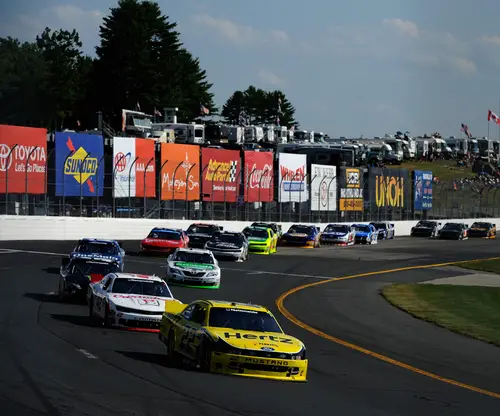Is NASCAR's Business Growing Or Shrinking; Why?
 |
By Rick Carlton
Between February and November each year, a torrent of hurtling stock cars circulate around racetracks from sultry South Florida to the sun-bleached wine country of Northern California, all amply supported by hours and hours of sports television programming. Based on the sheer density of these dual commercial attractions, one might come to conclude that the business of NASCAR racing is doing just fine.
However, under the hood, America’s most popular motorsport value is experiencing significant financial turmoil and folks inside and out of the sport are becoming concerned about the future. According to quarterly reports provided by International Speedway Corp (ISC), and NASCAR compiled between 2007 and 2013, attendance numbers for the country’s penultimate domestic sports attraction have dropped by an aggregated percentage of 26.37% on top of generally flat television ratings, leading to overall minimal-to-flat numbers associated with gross/net revenue.
While managers and interested parties have tended to be quick to suggest that the year-over-year malaise has been driven by issues involving the national economy, anecdotally my sense is that there may be more to it than that alone.
• First, the advent of motorsports on television became both a blessing and a curse once NASCAR stock car racing evolved to become the second most-watched sports broadcast attraction after National Football League telecasts. While the initial level of interest provided NASCAR with a pleasant financial impact in the early days, any sports value tends to reach a point of audience saturation over time.
• Second, the sheer density of today’s sports television programming provides for ready opportunities for viewers to be distracted, since in the case of the average motorsports novice, there is little practical difference between NASCAR racing and Monster Truck Racing. Granted Trucks are obviously bigger, noisier and race on dirt rather than on asphalt, but who cares; its racing – right?
• Third, the emergence of active three-screen technology has splintered the viewing audience into pockets of technical capability. For example a 2013 media consumption analysis of the U.S. market by Kantar Media suggests that 63% of overall domestic viewers consume sports programming via aggregated online sources including; stand-alone computers, laptops and mobile devices, while at the same time being actively supported by social networks.
• Fourth, the same analysis suggests that viewer patterns associated with in-home sports consumption that leverage traditional television systems are being significantly altered by the emergence of DVR-driven time-shifting, thereby marginalizing or eliminating the value of commercial advertising entirely.
• Fifth, the overall age demographic in the sports market has gotten younger, thereby driving more viewers/audiences toward alternative sports events including today’s plethora of extreme or action attractions, or combo-packaged events like X-Games. This traditional audience-degradation is further driven by periodic yet highly-visible international DIY sporting events like Red Bull Flugtag.
• Sixth, NASCAR is based on racing motivated by the internal combustion engine (ICE) using refined gasolines. However, in concert with the fifth element above, younger audiences tend to lean away from this more traditional fuels technology in favor of more obviously sensitive systems such as electric, hydrogen or bio-fuels.
All of these elements now work against the premise of what used to be an entirely viable business sports value, thereby eroding the potential of financial success in the mid and long-term. In short, as an old school value proposition, NASCAR is beginning to contract not expand. But in order to stem the negative movement it will require much more than just a new coat of paint; it will need a complete nuts-to-bolts overhaul.


